Timo Nihtilä: from “founding employee” to “principal scientist”
Timo Nihtilä describes himself as one of the “founding employees” at Magister Solutions, when it was first established as a private company in 2006. Magister emerged from a research collaboration between Nokia and the University of Jyväskylä (JYU) at the Dept. of Mathematical Information Technology, and Timo has been there right from the start.
Timo first met Magister’s present CEO, Jani Puttonen when they were starting their studies at the Dept. of Mathematical Informational Technology of JYU. Later they both went on to do their Master’s degrees in the department’s Telecommunications Lab. Timo’s thesis on the quality of service in wireless networks went on to receive the 2003 award for Best Master’s Thesis at the department. After this, in collaboration with Nokia, he did his PhD on a telecoms system simulator that looked specifically at the advanced transmission and reception algorithms of WCDMA, the air interface of 3rd generation (3G) wireless networks, in various realistic network scenarios.
“I’m the only one in the company who’s been here from the start”, Timo admits, although when asked about Jani he explains: “we started university together, and we did our Masters’ theses in the same telecommunications lab. Jani then went off for two years to do another project then we joined forces again here at Magister”.
“I worked for the University of Jyväskylä doing my PhD for a couple of years first, and then Magister was established on top of that project” Timo explains. “Magister began by continuing the work with Nokia on 3.5G, 4G, and WiFi simulators. It wasn’t until 2020 that the project ended, and now I’ve been working with other customers”. Throughout that project, Magister supported Nokia’s standardisation and wireless work by providing simulations and their analyses right up to 5G.
“There was one thing they had in common – simulators”
As well as developing radio resource management algorithms for WCDMA and HSDPA, the Nokia project got Timo involved with a wide range of technologies, e.g., LTE self-optimizing networks (SON), LTE licensed assisted access (LAA), WiFi IEEE 802.11 ac/ad/ay and NR-U (New Radio Unlicensed). “There was one thing they had in common – simulators” Timo adds. The range of technological and professional experience this project gave Timo may go some way to explaining why, since 2011, his job title at Magister has become Principal Scientist.
This job title no doubt has something to do with the fact that, besides the dissertations completed as part of his studies, Timo has also published over 30 articles for academic journals and international conferences. He is grateful that he’s been able to pursue his academic studies alongside his work at Magister. “That has been a very nice bonus,” he admits, “that you can advance your academic pursuits along with the work you are doing.”
“At first it might sound like I’ve been ‘stuck in one job’, as they say” Timo adds, “but it’s like there have been many jobs in this one career – or even just that one research project – and many different interesting things I have been studying there”. He is aware that studying is not always possible on a project where you might do more development work, but at Magister it has been possible to combine simulation development with studying, and he is clearly grateful for that.
“With freedom comes responsibility”
When asked more about this flexibility, Timo explains that “with freedom comes responsibility, so then you are responsible for your own work. You have to make sure that the things that are being asked from you are being done.”
Learn more about Timo’s work:
- Doctoral thesis https://jyx.jyu.fi/handle/123456789/18547
- Energy Consumption of DECT-2020 NR Mesh Networks https://www.researchgate.net/publication/361871347_Energy_Consumption_of_DECT-2020_NR_Mesh_Networks
- Energy Saving Router Rotation Protocol for DECT-2020 NR https://www.researchgate.net/publication/365432134_Energy_Saving_Router_Rotation_Protocol_for_DECT-2020_NR
Mesh-networking for the Internet of Things (IoT)
Most recently Timo has been studying low power mesh networks for IoT, where devices can relay information to each other without the need for any kind of intervention. “You can have an IoT communication device inside whatever,” Timo explains holding his thumb and forefinger together in an imaginary device. “For example, an autonomous robot, wireless sensor or an asset tracker,” he continues. “They are doing a particular thing, then they are transmitting messages about whatever they are measuring or doing to another device. Then that device is relaying it to another device, and so on.”
Timo has an answer in case we were wondering where all this information goes. “There are these private networks where they are monitoring or controlling devices in one facility, for example. So the information is going to a local server, or a remote server for observation, visualization, post-processing or even, for example, manual inspection. Measurements are taken and then commands given back to these devices.” This is what is known as a use case.
“There’s a wide variety of use cases for IoT,” Timo points out, “but that is also the challenging part,” he admits. “No one can say that IoT is limited to this, as long as information is transmitted back and forth”. Timo’s job is therefore not about the hardware at each end, or the particular use case. “My role is to develop the techniques and algorithms so that information goes as efficiently and as fast as possible from one device to another.” This means the technology he’s developing is usable elsewhere, not just in that particular use case.



